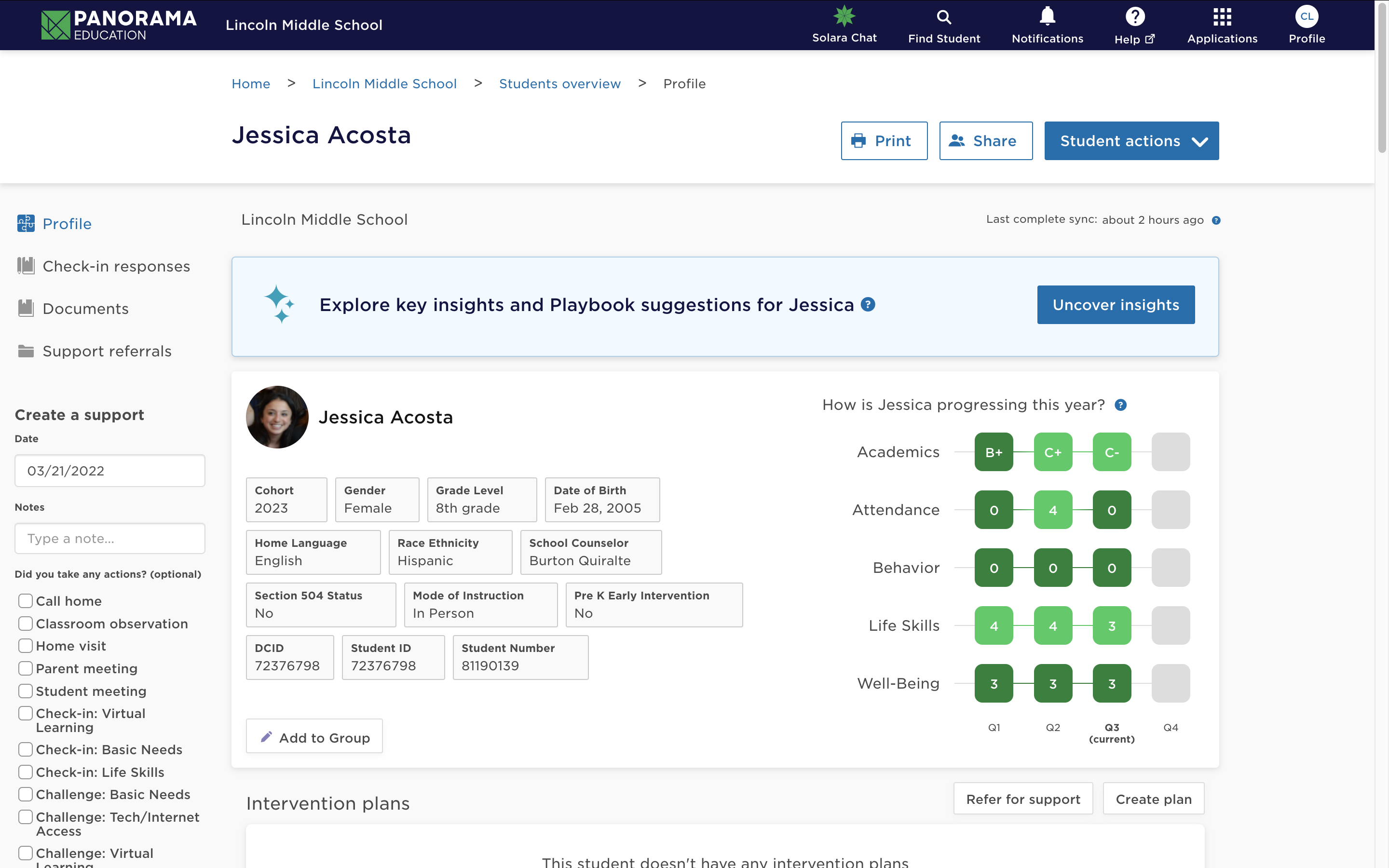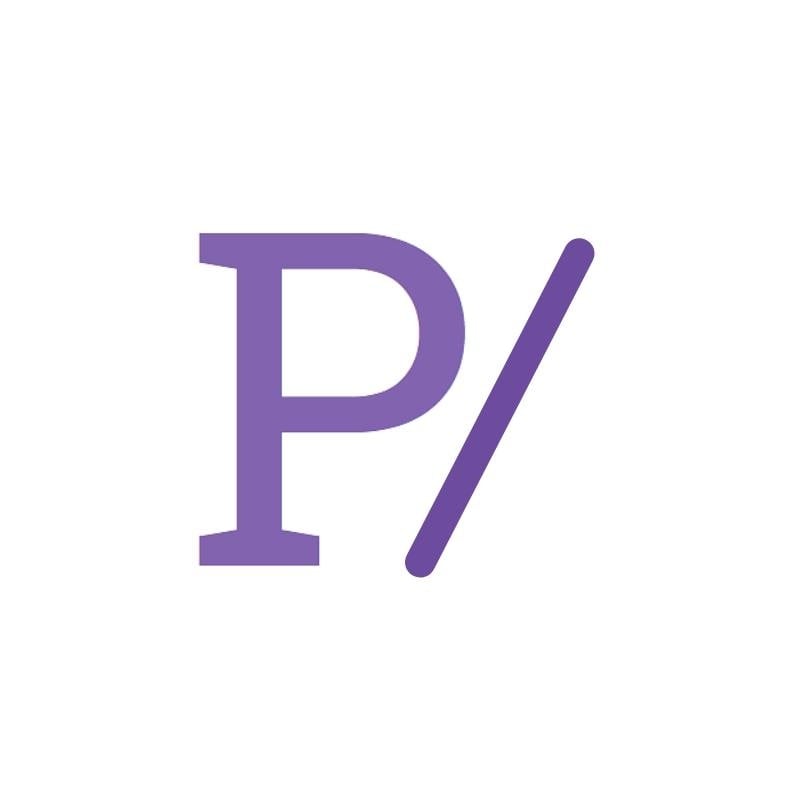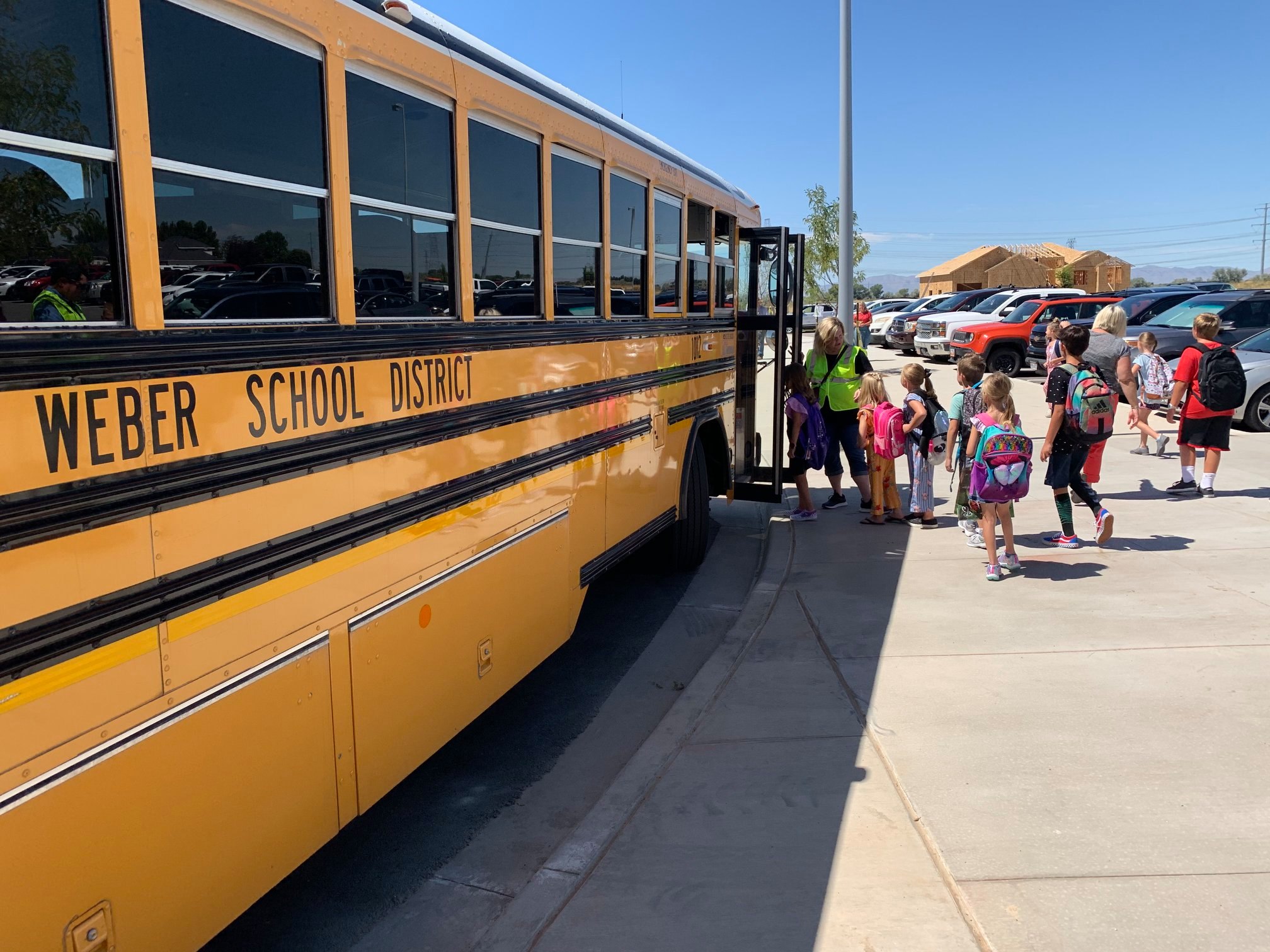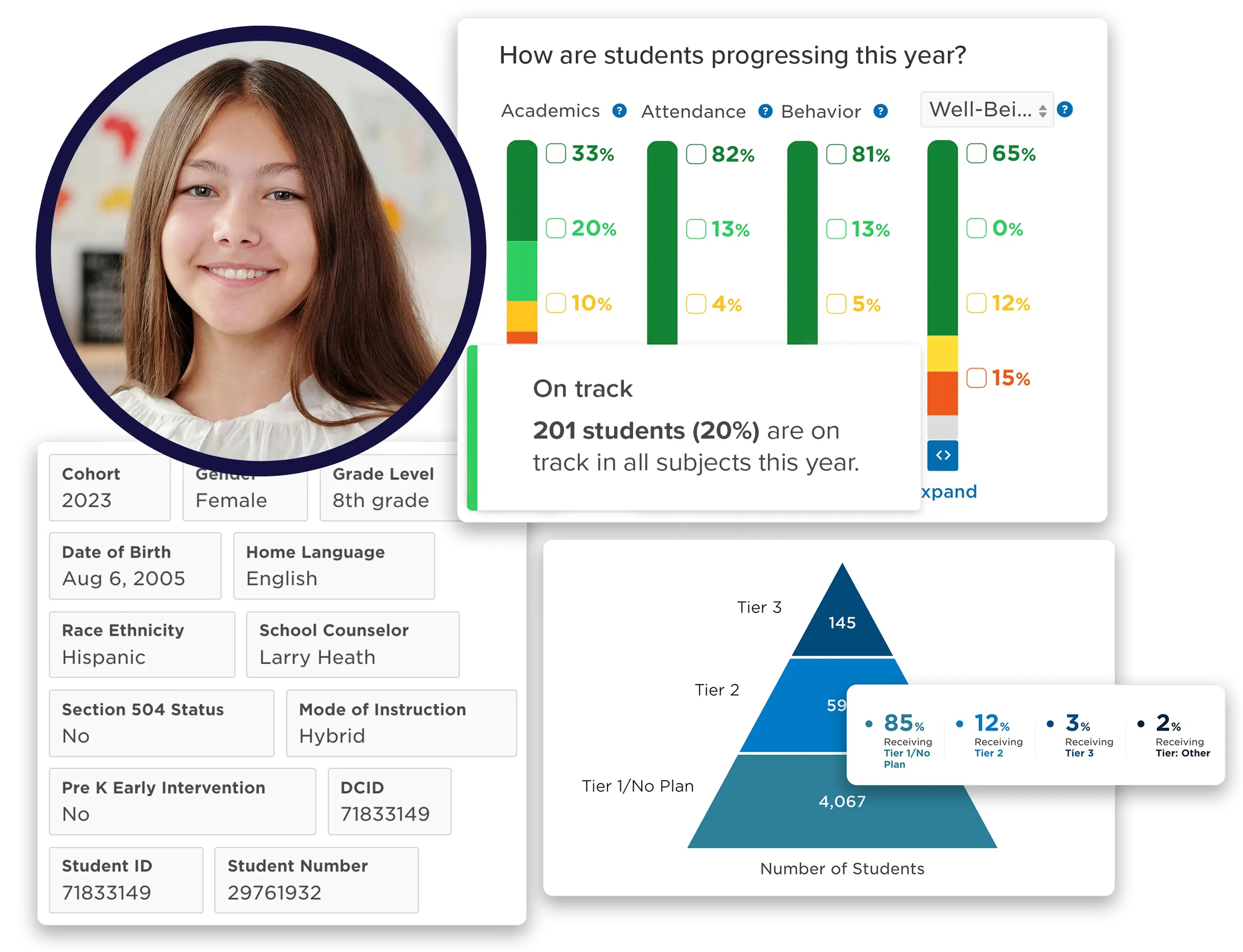Pickerington Local School District, just outside Columbus, Ohio, serves more than 11,500 students across 16 schools. In recent years, the district reimagined its approach to MTSS by embracing a grassroots strategy, driven by school teams. Learn how district leaders empowered school administrators and counselors to lead implementation efforts in their own buildings.
Challenges
- While district leaders were committed to strengthening Pickerington's MTSS framework, they faced inconsistent implementation across buildings.
- Manual student data processes added strain, taking valuable time away from intervention planning.
- Even with access to survey insights, educators struggled to translate holistic student data into timely, targeted interventions for attendance, behavior and sense of belonging.
Solutions
Results
- At Lakeview Junior High, sense of belonging scores rose by more than 10 points, reflecting a stronger, more connected school climate.
- In one particular attendance group, 7 of 9 students had zero absences due to targeted interventions and daily support.
- Counselors who once needed to spend multiple days building spreadsheets can now instantly identify and disaggregate at-risk students.
- Educators across the district are sharing a consistent approach when it comes to monitoring academic, behavior, and wellness supports.
Challenges
Though Pickerington Local School District was committed to strengthening their MTSS, systems varied widely from school to school. Some buildings had established data routines, while others relied on spreadsheets and loose protocols. The lack of shared infrastructure made it difficult to monitor support over time or ensure smooth transitions between grade levels.
Manual data work added strain, often taking a few days to put together “a spreadsheet of at-risk students and sort it by demographics,” said Sarah Geiger, school counselor at Lakeview Junior High.
At the same time, educators were noticing emerging needs—especially around emotional regulation and student connection. Tussing Elementary School had historically seen a drop in students’ sense of belonging scores from fall to spring. Lakeview found that incoming students often struggled with their transition—leading to a weaker sense of belonging and lower grades.
As students struggled to self-manage, teachers lacked clear indicators of when or how to intervene. Although Tussing had plenty of behavior data, Principal Matt Dansby saw a gap in how that data was being used: “We were really interested in understanding what needs students had before it turned into a behavior that we could actually see.”
For Pickerington’s school leaders, access to survey data was a step in the right direction—but without systems to act on that data, it remained difficult to turn insights into consistent, building-wide practices.
Solution
Pickerington’s response was clear and compelling: trust school leaders to build the system—together. “It's not much of a top down model. We really have the autonomy to build it as we want at the building level,” said Principal Ben Baptist of Lakeview Junior High.
Using the full potential of Panorama Student Success, they were able to do just that.
Marvella Allen, Director of Prevention & Intervention, notes how building leaders have shown their dedication and commitment—through the formation of Pickerington’s Panorama Power Players. This committee is composed of building principals, assistant principals, school counselors, and a district administrator who meet biweekly to identify what’s working and co-create clear, step-by-step processes on how to best use the Student Success platform in alignment with the district’s goals. They’ve also established a common format for student attendance plans that travels with the student from one building to the next—ensuring smooth transitions between grades and schools.
At Tussing Elementary, Assistant Principal Tara Ruckman—described by colleagues as the building’s “data guru”—has led the way in turning survey indicators into real-time interventions. The school is evolving its support model, shifting from primarily small group interventions to more personalized, one-on-one approaches that give educators a holistic view of every student.

Panorama Student Success (demo data displayed)
Using Panorama, Ruckman's team identifies students who report zero strengths and enrolls them into one of the building's six week small group intervention programs that meets their needs and provides them with individual check-ins. These students are paired with strong peer models and guided through structured conversations focused on courage, connection, and confidence-building. To further support belonging, Tussing also offers craft groups designed to help students feel seen and empowered.
Staff members at Tussing meet weekly in student support teams to review Panorama indicators at the classroom level. “If teachers are focusing on a skill like self-management, they can look at which students have flagged strengths or challenges and differentiate accordingly,” Ruckman explained. “It’s awesome what we’re getting out of small group interventions,” she added, “but to truly move the needle, we have to focus on things at the individual level. This means we need all hands on deck—including our teachers.”
Principal Matt Dansby echoed that collaborative spirit: “We’re all busy—so let’s combine our time and do things together.”
Across town at Lakeview Junior High, Geiger and Baptist are taking a similarly intentional approach. With insights from their first year using Panorama, Baptist spent the summer developing a clear vision and system for small-group intervention. Now, Lakeview’s seven-member support team meets weekly to monitor data and track progress across academic, behavior, and wellness indicators.
“We had the same people overseeing interventions and having similar conversations last year, but there wasn’t enough structured, data-driven monitoring,” Baptist said. “It was mostly anecdotal. But this year, things clicked because we had a clear vision and plan for how to leverage our Panorama data.”
At Lakeview, Panorama data also fuels tiered supports for emotional regulation. Students flagged for stress are referred to the school’s Smart Lab—a dedicated space where they take pre- and post-tests, practice calming strategies, and build emotional awareness.
“The fact that we've been able to quantify a lot of that data is what's also allowing the school and district to continue investing in it,” Geiger explained.
Results
Thanks to this school leader-led, data-informed approach, Pickerington is seeing measurable progress.
At Tussing, the sense of belonging among 3rd and 4th graders—typically marked by a six-point decline between fall and spring—dropped by just one point this year. “Dropping six percentage points versus dropping one percentage point is great progress and movement in the right direction,” said Ruckman.
At Lakeview, belonging scores rose from the mid-30s to 48%—a significant jump for junior high students navigating a key transition period.
In one Lakeview attendance group, 7 of 9 students maintained perfect attendance. Their success was celebrated with a Donut Day—a gesture that reinforced consistency, care, and connection.
On the data front, Lakeview’s counseling team has experienced an expedited way of aggregating at-risk students by demographic: “Now with Panorama, we get that information instantly,” said Geiger. “So instead of spending time gathering data, we’re using it to track progress and support students more effectively.”
That same real-time access is also enabling teachers and administrators to intervene earlier—especially when forming targeted small groups for academic, attendance, and life skills supports. “It gives us the real-time data that we need,” said Principal Ben Baptist. “It’s accurate, it’s current, allowing us to have conversations to build these groups.”
Most importantly, school leaders feel aligned. Whether a student is moving from fourth to fifth grade or from middle to high school, the supports around them remain familiar and consistent. The Power Players’ shared protocols are helping MTSS feel not just sustainable—but shared.
Looking Ahead: Next Steps
The next phase of Pickerington’s work is about embedding these systems district-wide. The Power Players are building a universal MTSS manual to ensure every building can implement Panorama in a way that’s both flexible and consistent.
More teachers are being trained to use Panorama in their daily instruction, and schools like Tussing are now sharing student trends with PTO groups—inviting parents to help co-create solutions. As parent-teacher conferences evolve, leaders hope Panorama becomes a key part of the conversation.
Moving forward, Pickerington plans to refine progress monitoring, improve onboarding for new users, and expand access to Panorama’s full capabilities. The goal is clear: empower the educators closest to students—and the rest will follow.







